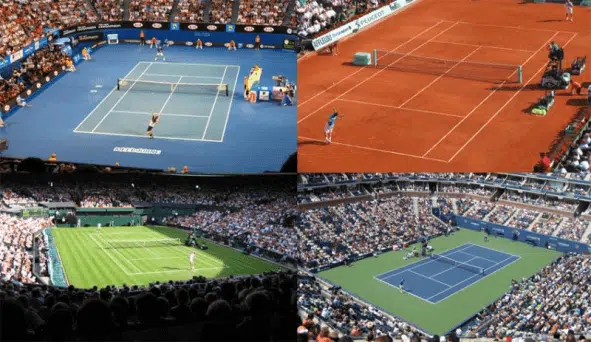Difference between 18×20 and 16×19 String Pattern

YES! both 18×20 and 16×19 most likable string patterns because they offer a unique set of advantages.
Now, what are those advantages you might be thinking of? Let’s find out!
Stringing with the drop weight machine or other options you can adopt, now select the best tennis racquet strings along with chosen string pattern do affect your game in some ways.
Now if you want to mold your game around a classic spinner of the ball like Roger Federer, you have to go with a certain string pattern. On the contrary, there is a specific string pattern to hit the ball with raw power like Novak Djokovic!
The next question is what benefit do we get from these string patterns? How do the Professionals choose a string pattern? Without further ado, Let’s explore every bit of detail right now!
Improve your Spin with 16×19 Open String Pattern
The first sort of string pattern which you might want to test out is an open string pattern. The 16 x 18 and 16 x 19 are the most common open string patterns. The numbers here stand for the number of horizontal x vertical strings.
Now, you might be thinking about getting a good spin in your shot right? In this case, the open string pattern will be your go-to choice.
An open string pattern has by default larger spacing between them as compared to a dense string pattern. Now, what does this do for someone who is trying to build a proper spin? Well, the answer lies in minor details.
The larger spacing in the open string pattern gives a proper surface area for the ball to make contact with the racquet. This in turn adds more depth, power, and spin behind the shot and you have a better chance of hitting a point.
So, if you are trying to hone your game like the legend Roger Federer. A tennis racquet with a 16×19 string pattern should be your training buddy.
Take Control with 18x20 Dense String Pattern
For composed players with a precise and timed shot, the preferable option is to go with a dense string pattern like the 18×20.
In the racquets which feature dense patterns, the string patterns have smaller squares, and accordingly, tighter holes are formed.
This ultimately results in a much more stiff and more compact contact between the racquet and the ball. The consequences of such a string pattern are advantageous in the sense that you can improve your accuracy for flat shots.
Think of it this way, with a dense racquet, you are going for the kill. The force is much greater at the contact spot and you can easily hit slice shots as well as low-trajectory shots.
So, if you are not that big a fan of spin and want to mold your game after the power hitters like Novak Djokovic! You have to grab that dense pattern racquet and start smashing some shots.
Frequently Asked Question
The major effect that a tennis string pattern has on a racquet is in the spin aspect. When there is more space between the strings, the ball responds better and spins better.
So, traditionally companies have been manufacturing open-pattern racquets that offer more spin.
The string patterns used by some topnotch athletes in Wimbledon 2014/2015 are as follows:
• Serena Williams – 77 restrings
• Rafael Nadal – 47 restrings
• Kei Nishikori – 49 restrings
The most common string patterns in tennis are 16×18, 18×20, and 16×19. Apart from these, we have also seen a 16×20 or 18×19 pattern which is not that common but they do exist.
To Conclude
The common string patterns have their pros and we have shared them with you.
On one hand, you have a 16×19 string pattern which adds more spin and depth to your game. On other hand, an 18×20 string pattern enables you to play precisely to control your shots better, I would choose 16×19.
At the end of the day, it is up to you now as to how you want to proceed and model your overall game!

As someone who enjoys both playing tennis and writing, I strive to embody a combination of skillful technique and unwavering perseverance on the court while simultaneously offering valuable observations and reflections to my audience through my articles. My overarching objective is to motivate and encourage others on their individual paths towards tennis success.





